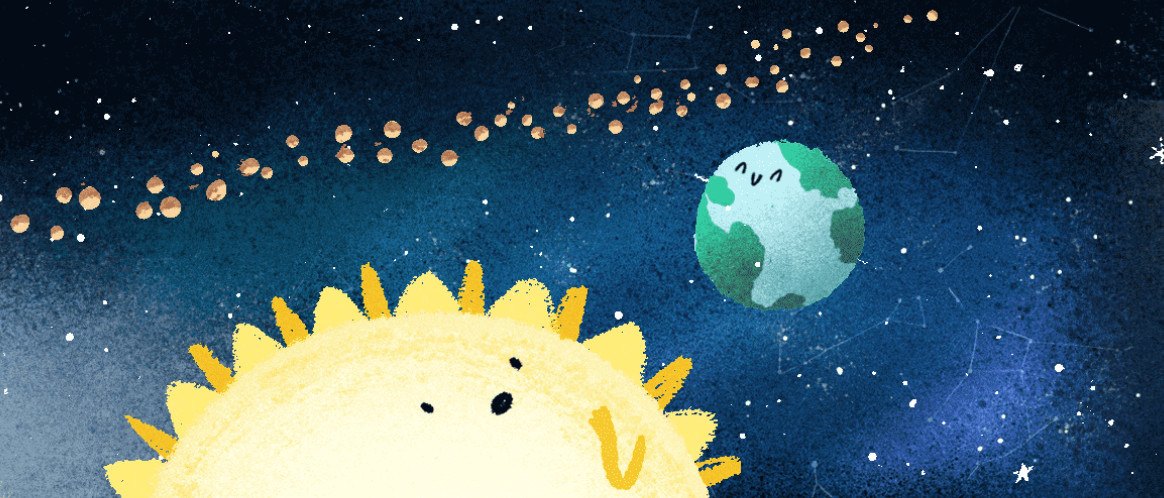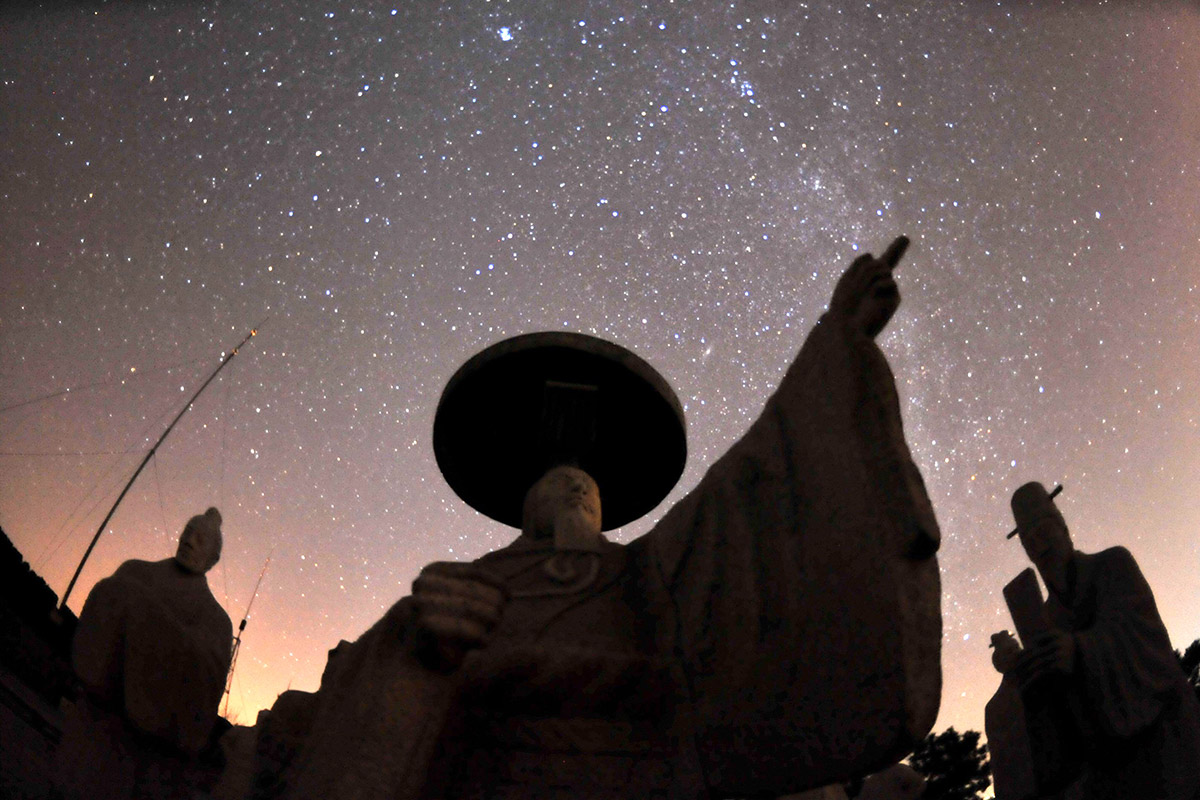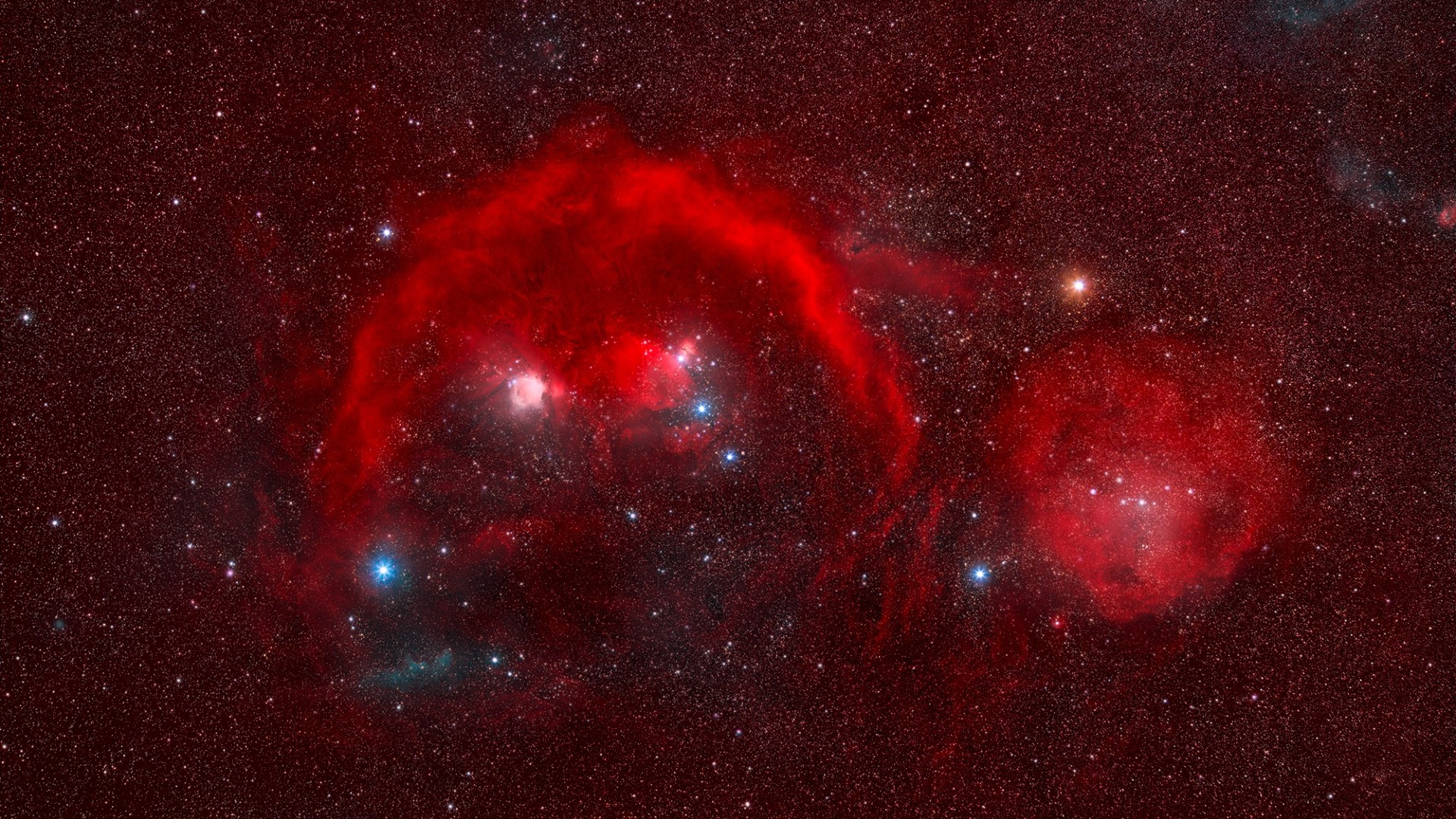Google Doodle Celebrates the Geminid Meteor Shower of 2018 (And It's ADORABLE!)
The 2018 Geminid meteor shower peaks overnight tonight (Dec. 13) and Google is celebrating the celestial light show with a Google Doodle that is simply out of this world.
The doodle, while not animated, is a super-adorable slideshow that depicts the evolution of the Geminid meteor shower from its parent body, the asteroid 3200 Phaethon, to the amazing celestial event we know today.
"Named after the ancient Greek god Apollo's son, 3200 Phaethon is an asteroid whose orbit brings it closer to our sun than Mercury," the Google Doodle folks wrote in a doodle description. "First discovered via satellite data 35 years ago, Phaethon is responsible for bringing the spectacular Geminid meteor showers to Earth's atmosphere each December. With each passing year since the mid-1800s, the proliferation of yellowish streaks of light in the night-time sky have grown more intense. [2018 Geminid Meteor Shower Guide]

The Geminid meteor shower occur when Earth passes through a stream of dusty debris from 3200 Phaethon. When those bits of space rock hit Earth's atmosphere, they burn up as dazzling meteors.
"The cosmic dust may have resulted from a crash with another flying object, but there's little danger of any Geminids landing on Earth as it normally disintegrates in the Earth's atmosphere," Google representatives wrote.
NASA's meteor expert Bill Cooke has told Space.com that the 2018 Geminids have the potential to be the best meteor shower of the year. Space.com columnist Joe Rao agreed, citing in his column the nice timing of this year's Geminids: the crescent moon will set around 10:30 p.m. local time and will not interfere with any brilliant meteors.
But when should you look? Be prepared to stay up late.
Breaking space news, the latest updates on rocket launches, skywatching events and more!
"No need for a telescope or binoculars: fragments from Phaethon,s debris trail should become visible after 9 pm on December 13, peaking after midnight with as many as 120 meteors per hour," Google Doodle representatives wrote.
Editor's note: If you capture an amazing view of the Geminid meteor shower or any other night sky view that you would like to share with Space.com for a possible story or gallery, send images and comments in to: spacephotos@space.com.

Email Tariq Malik at tmalik@space.com or follow him @tariqjmalik. Follow us @Spacedotcom and Facebook. Originally published on Space.com.
Join our Space Forums to keep talking space on the latest missions, night sky and more! And if you have a news tip, correction or comment, let us know at: community@space.com.

Tariq is the Editor-in-Chief of Space.com and joined the team in 2001, first as an intern and staff writer, and later as an editor. He covers human spaceflight, exploration and space science, as well as skywatching and entertainment. He became Space.com's Managing Editor in 2009 and Editor-in-Chief in 2019. Before joining Space.com, Tariq was a staff reporter for The Los Angeles Times covering education and city beats in La Habra, Fullerton and Huntington Beach. In October 2022, Tariq received the Harry Kolcum Award for excellence in space reporting from the National Space Club Florida Committee. He is also an Eagle Scout (yes, he has the Space Exploration merit badge) and went to Space Camp four times as a kid and a fifth time as an adult. He has journalism degrees from the University of Southern California and New York University. You can find Tariq at Space.com and as the co-host to the This Week In Space podcast with space historian Rod Pyle on the TWiT network. To see his latest project, you can follow Tariq on Twitter @tariqjmalik.
